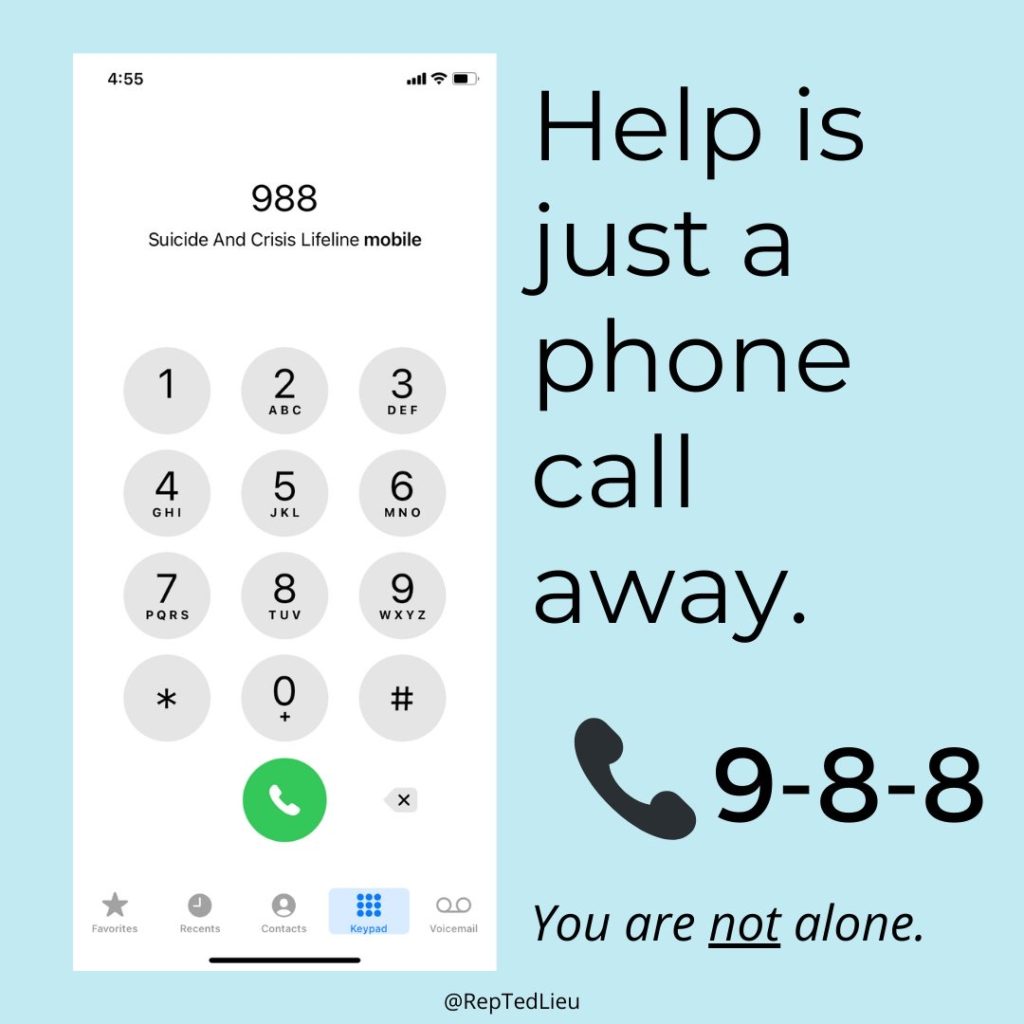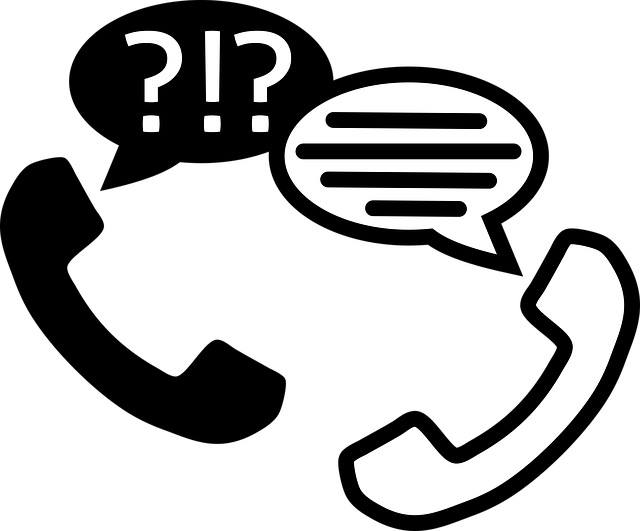The new 988 Hotline was launched 7.15.2022. Verywell Health published an article this week to highlight the features of this service. https://www.verywellhealth.com/988-suicide-prevention-hotline-5547790. Here are highlights from this important resource.

Overview
- Starting July 16, you can call or text 988 for help if you’re experiencing a mental health crisis
- The hotline can connect callers to trained counselors who can help them cope with emotional distress and suicidal thoughts, or connect them to additional resources
- The three-digit number will hopefully be easier for people to remember than the 1-800 hotline
Starting July 16, anyone in the United States experiencing a mental health crisis can text or dial 988, the new National Suicide Prevention Lifeline.
The 988 number was established to address the growing suicide and mental health-related crisis care needs in the U.S., according to the Substance Abuse and Mental Health Services Administration (SAMHSA Substance Abuse and Mental Health Services Administration. 988 Frequently asked questions.)
In 2020, the Lifeline answered more than 2.1 million calls and over 200,000 chats. Officials said they hope the three-digit number will be easier to remember than the 1-800 number, making emergency mental health care more accessible.
How Does 988 Work?
Before 988, Americans could call 1-800-273-8255 or text “TALK” to number 741741 to reach the suicide prevention hotline. Stavros said the former hotline was a long number that people “had to Google.”
The new 988 number will operate similarly: It is a 24-hour hotline where people can quickly reach a trained counselor by calling or texting.
People can call the number if they have suicidal thoughts, or they can dial on behalf of a loved one whom they think is struggling. But Stavros emphasized that 988 is meant to serve people who have a mental health crisis of any kind, not limited to those who have suicidal ideations.
If someone is experiencing depressive thoughts or feeling unloved or unsafe, “those feelings are enough to call 988,” he said.
When people call 988, a trained counselor will listen and talk them through the situation. In some cases, the counselor may refer the caller to additional resources, including outpatient behavioral health services, mobile crisis teams, home-like crisis stabilization, residential treatment, or emergency stays. (Bipartisan Policy Center. Answering the call. 988: A new vision for crisis response.)
Will 988 Really Help?
The current mental health crisis is “an epidemic” that demands better access to high-quality services, Stavros said. Suicide is a leading cause of death among youth ages 10 to 14 and adults 25 to 34, according to the Centers for Disease Control and Prevention (CDC Centers for Disease Control and Prevention. Facts about suicide.)
A 2020 survey showed that the suicide rate in the U.S. has risen in the past two decades, and in recent years the U.S. has had the highest suicide death rate compared to 10 other high-income countries. (Commonwealth Fund. Mental health care needs in the U.S. and 10 other high-income countries. Findings from the 2020 Commonwealth Fund international health policy survey.)
The researchers suggested solutions such as implementing a wider range of care to help people with mild to moderate mental health symptoms and integrating physical and mental care.
Studies also show that, in the U.S., many people with mental health problems lack the physical or financial resources to get the help that they need. (Coombs NC, Meriwether WE, Caringi J, Newcomer SR. Barriers to healthcare access among U.S. adults with mental health challenges: a population-based study. SSM Popul Health. 2021;15:100847. doi:10.1016/j.ssmph.2021.100847)
Improving mental health care requires efforts beyond staffing crisis call centers with well-trained responders, such as aftercare centers that can foster healing and care, Stavros said.
In a report on the necessity of 988, the Bipartisan Policy Center has called upon Congress to invest in behavioral health services, including funding to implement 988 and build out the U.S. crisis system. The think tank also advised SAMHSA to support states in filling behavioral care vacancies and to create a scorecard to assess 988’s success in different states.
The hotline is not a federal initiative, so its success would vary widely across states. With the former Lifeline, some states struggled to respond to crisis calls of their own residents. Many of them rerouted the calls out-of-state, with Nevada answering only 65% of Lifeline calls in May, Politico reported.
State-based funding for 988 likewise varies. Some states have not secured permanent funding, while others have imposed small fees on calls from cell phones. For instance, Washington state imposes a 24-cent-per-line tax—rising to 40 cents in 2023—to fund hotline services.
The hotline will be a work-in-progress, Stavros said, but the work is needed.
“We have to start somewhere,” he said. “We want to be patient. We’re going to need time to work out the kinks.”
FCC.GOV Fact Sheet
Here is a link to a fact sheet from the FCC (PDF document): https://www.fcc.gov/sites/default/files/988-fact-sheet.pdf

Domestic Violence
Domestic violence statistics are sobering.
- Every 9 seconds in the US a woman is assaulted or beaten
- Around the world, at least one in every three women has been beaten, coerced into sex or otherwise abused during her lifetime. Most often, the abuser is a member of her own family
- Domestic violence is the leading cause of injury to women—more than car accidents, muggings, and rapes combined
- Studies suggest that up to 10 million children witness some form of domestic violence annually
- Nearly 1 in 5 teenage girls who have been in a relationship said a boyfriend threatened violence or self-harm if presented with a breakup
- Everyday in the US, more than three women are murdered by their husbands or boyfriends
- Ninety-two percent of women surveyed listed reducing domestic violence and sexual assault as their top concern
- Domestic violence victims lose nearly 8 million days of paid work per year in the US alone—the equivalent of 32,000 full-time jobs
- Based on reports from 10 countries, between 55 percent and 95 percent of women who had been physically abused by their partners had never contacted non-governmental organizations, shelters, or the police for help
- The costs of intimate partner violence in the US alone exceed $5.8 billion per year: $4.1 billion are for direct medical and health care services, while productivity losses account for nearly $1.8 billion
- Men who as children witnessed their parents’ domestic violence were twice as likely to abuse their own wives than sons of nonviolent parents
The US Department of Health & Human Services has a National Domestic Violence Hotline
Accessibility
The Hotline can be accessed via the nationwide number 1−800−799−SAFE(7233) or TTY 1−800−787−3224 or (206) 518-9361 (Video Phone Only for Deaf Callers). The Hotline provides service referrals to agencies in all 50 states, Puerto Rico, Guam and the U.S. Virgin Islands. Persons can also contact the Hotline through an email request from the Hotline website Visit disclaimer page.
Services are provided without regard to race, color, national origin, religion, gender, age, or disability (including deaf and hard of hearing). Assistance is available in English and Spanish with access to more than 170 languages through telephonic interpreter services.
Services
The Hotline provides the following services:
- Crisis intervention
- Domestic violence education
- Safety planning
- Directly connecting callers to Service Providers such as local shelters
- Referrals to agencies that provide legal, economic self-sufficiency, sexual assault, elder abuse, children’s and other related services
National Domestic Violence Hotline Fact Sheet
In Closing
During times of duress having support from those you know and/or outside services is vital. Feel free to share this information far and wide.
Contingency planning for home and business is highly personalized for your circumstances. My focus concentrates on practical and actionable steps you can take now while you are living. If you are interested and/or have questions, pop me a note: Lynn@thelivingplanner.com.
If you’d like general information about what I do and why I do it, my website is: https://thelivingplanner.com and my online courses/resources will give you an idea of what I offer to assist people, pets and businesses on this website: https://courses.thelivingplanner.com
This quote by Winston Churchill spoke to me this week, “Character may be manifested in the great moments, but it’s made in the small ones.” Look after yourself and others this week. We never know what people are going through 💗 — Lynn
#LifeHacks #CareForPeopleCareForBusiness
